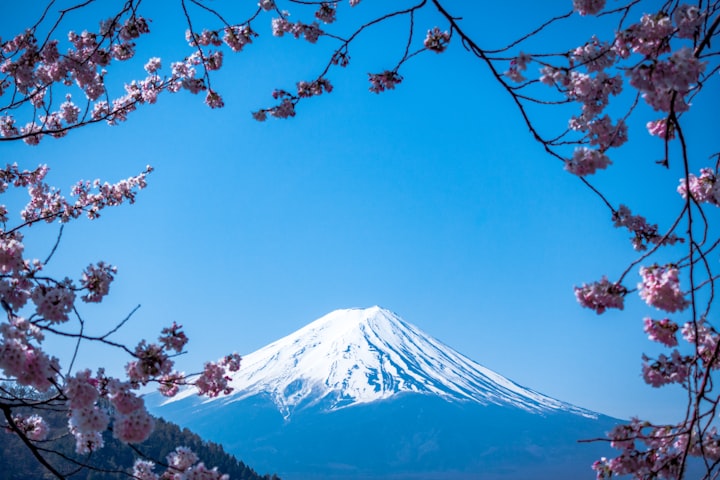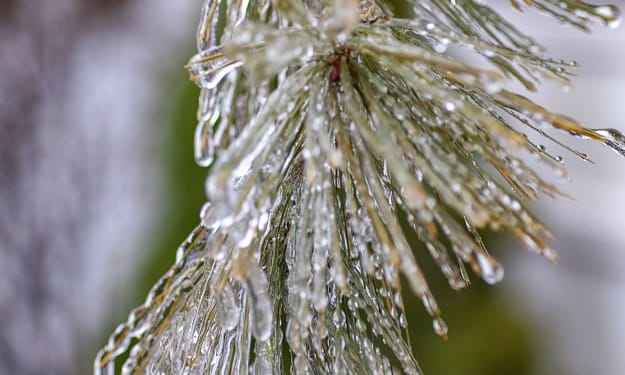Haiku Poetry: Unlocking the Secrets of a Timeless Artform
The history, tradition, and artistry of haiku poetry
Haiku poetry has been around for centuries, yet it remains one of today’s most beloved and cherished forms. The haiku is a poem traditionally written in three lines, with five syllables in the first line, seven in the second line, and five in the third. It is often used to express something about nature or feeling or emotion. This article will explore why haikus are so unique, what makes an excellent haiku poem, and provide some helpful tips to get you started writing your own haiku.
What Is a Haiku?
A haiku is a traditional form of Japanese poetry that consists of three lines with syllable counts of 5–7–5. The form originated in Japan during the 17th century and has since spread throughout other countries and cultures. A successful haiku should be able to evoke an emotional response from its reader due to its focus on brevity and simplicity. Though there are no set rules for writing a good haiku, many successful poems have three components — season (or time of year), an object which may be physical or abstract (such as love), and an emotion that can be felt through the poem’s words or imagery.
What Makes a Great Haiku?
The best haikus can evoke strong emotions within their readers despite their few words. They often use simple language combined with vivid imagery to create powerful images in readers’ minds. Focusing on conveying feelings rather than telling stories creates an intimate connection between writer and reader, allowing us to experience things more deeply than we usually would. Many great haikus also use clever wordplay or double meanings to convey deeper meaning than what’s initially seen on the surface level.
Haikus can range from fun and playful to serious and contemplative — it depends on your poem’s message! They can be about nature or seasons; they can tell stories or express feelings; they can be interpreted in many ways depending on who reads them. No matter what type of poem you write, there is no wrong way if you can get your point across effectively using only a few words! To give you an example, here are some great classic examples by Basho Matsuo: “An old silent pond… / A frog jumps into the pond, / splash! Silence again”; “Lightning flash — / What I thought were faces / Are plumes of pampas grass.”
Tips for Creating a Successful Haiku Poem
1. Start by writing down a list of words or phrases that evoke strong emotions and then consider how they could be used in your haiku.
2. Rely on simple language to express complex ideas, feelings, or images.
3. Consider the seasonality of your poem and how it relates to nature or the world around you.
4. Use metaphors, similes, and imagery to add depth to your poem while still keeping it concise.
5. Pay attention to the syllable count in each line, and try to use natural pauses or breaks as you read it aloud for a better flow.
6. Write multiple drafts of your haiku and refine it as you go.
7. Read your haiku aloud to ensure it has a natural and melodic flow.
8. Ask for feedback from other people to get an idea of how others interpret your poem.
9. Most importantly, have fun with it! There are no rules when it comes to writing a great haiku.
10. Enjoy creating something beautiful with only a few words.
A Few Haiku Exercises to Help You Get Started
• Create a haiku about a place that you love.
• Write a haiku about an emotion such as joy, sadness, or fear.
• Take an object and write three lines to express how it makes you feel.
• Describe your favorite season in five-seven-five.
• Create a haiku with a moral or lesson.
Conclusion
Writing a successful haiku requires careful thought about how much information you want to convey with few words. It is both challenging yet rewarding as it allows us access to our thoughts and emotions and others’ perspectives on life through carefully crafted metaphors and allusions. Whatever direction your poems take, remember that at its core — an incredible haiku will always evoke emotion from its readers no matter where they come from or what their background may be! Happy writing!
FAQs
Q: What makes a great Haiku?
A: A great haiku captures a moment and conveys emotion and insight. It should have an interesting combination of imagery, rhythm, and form. The poem should be concise yet meaningful, giving the reader pause to ponder its subject or message. Additionally, it should contain metaphors and allusions to create a unique experience. Finally, though not always required in haikus, a kireji (cutting word) can provide an extra layer of depth to your work.
Q: What resources can I use to learn how to write haikus?
A: Many valuable resources are available online for those interested in learning how to write haikus. Some good ones include Onfiction.org, Haiku Poets of Northern California, Creativity Portal, The Write Practice, How to Write a Poem, Haikugeek and 4Writers. Additionally, Writers Digest University Mindful Writing Challenge, Writers Helping Writers and Writing with the Masters all have helpful tutorials on writing haikus. Finally, for more detailed information about the form, you can look at The Haiku Foundation’s resources and websites like Education, Writing Forward, and LitReactor, which provide general tips for crafting successful haikus.
Q: What is a kireji?
A: A kireji (or cutting word) is an extra element used in traditional Japanese haikus to create a pause or contrast within the poem. The most common kireji used in English language haiku is “but” or “yet.” For example:
The sun sets, but/Yet hope remains in my heart/For what tomorrow brings.
Kireji can be beneficial as they often help to bring an additional layer of depth and structure to your composition. However, they are not necessary for successful haikus, and you should use them only if they naturally fit your work’s content.
Q: What are some tips for writing a good haiku?
A: Some helpful tips for writing a great haiku include choosing an interesting subject, paying attention to syllable count (5–7–5 format), and utilizing metaphors/allusions. Additionally, you should strive to capture the emotion in your poem and provide insight into its subject. Finally, while optional, adding a kireji can further bring depth and structure to your work. With these tips in mind, you should be well on your way to creating beautiful poetry!
Good luck with your haiku writing journey! May the words flow freely from your heart and onto the page!
About the Creator
Carla Paton
Writer, Poet, Rancher, Ph.D. ABD, MA, MASCIS







Comments
There are no comments for this story
Be the first to respond and start the conversation.